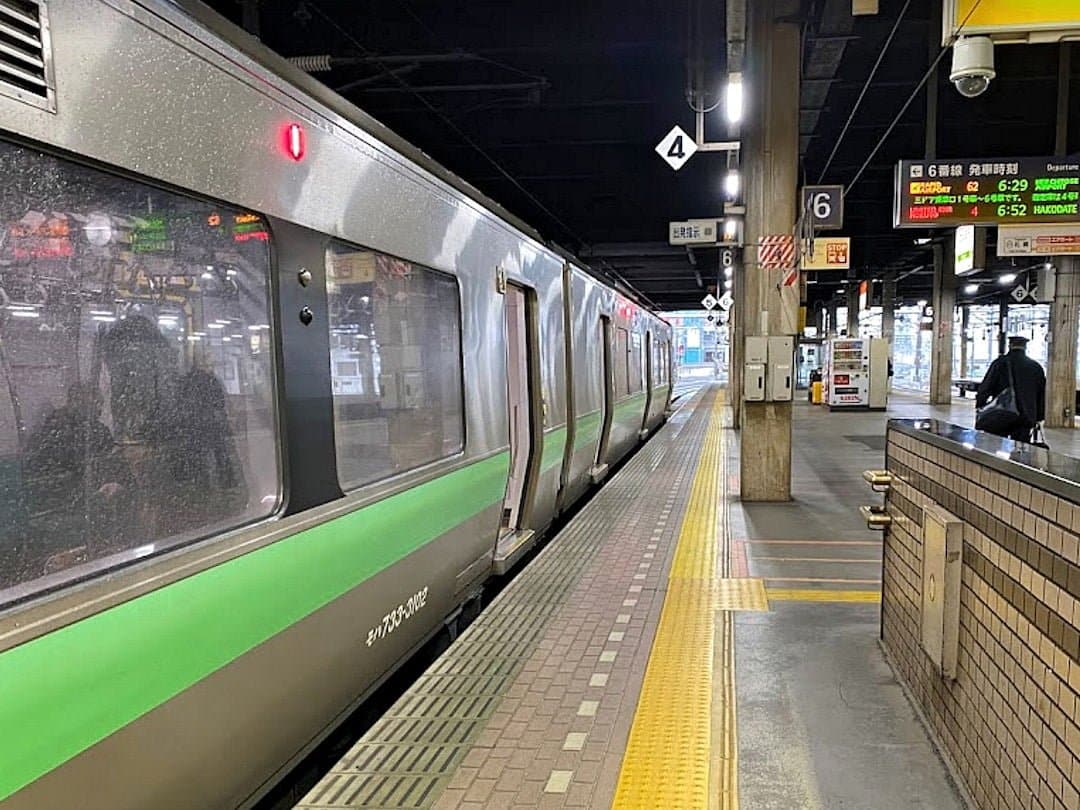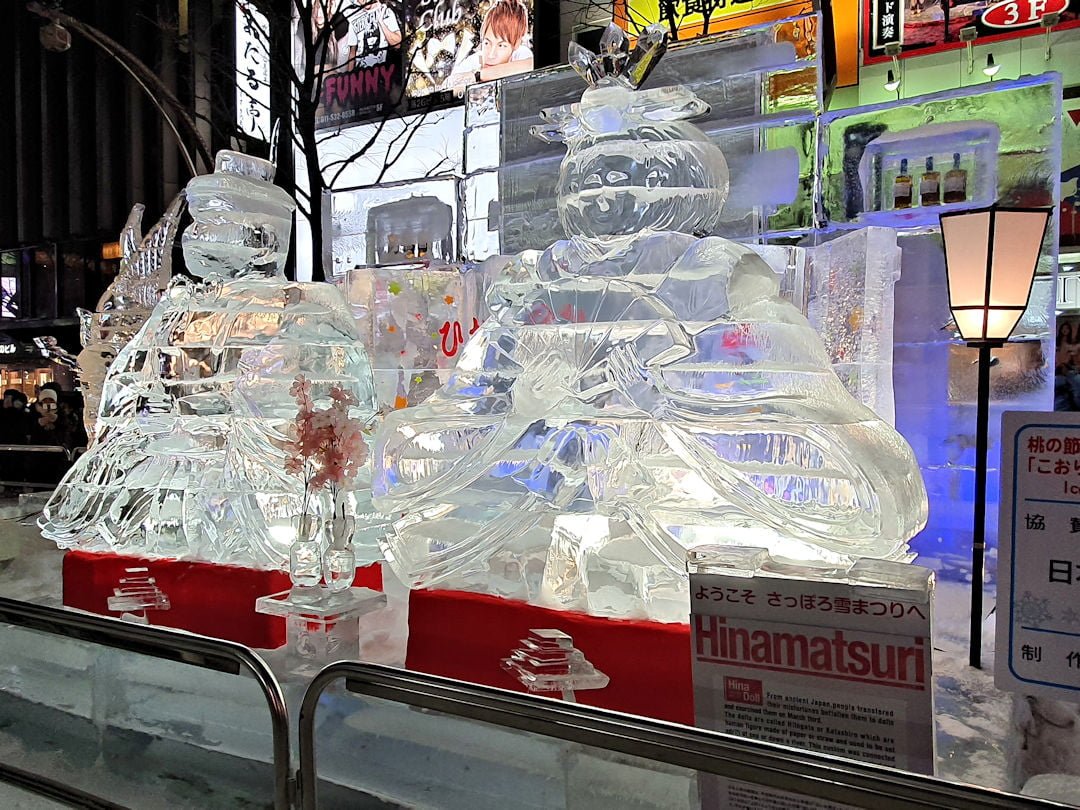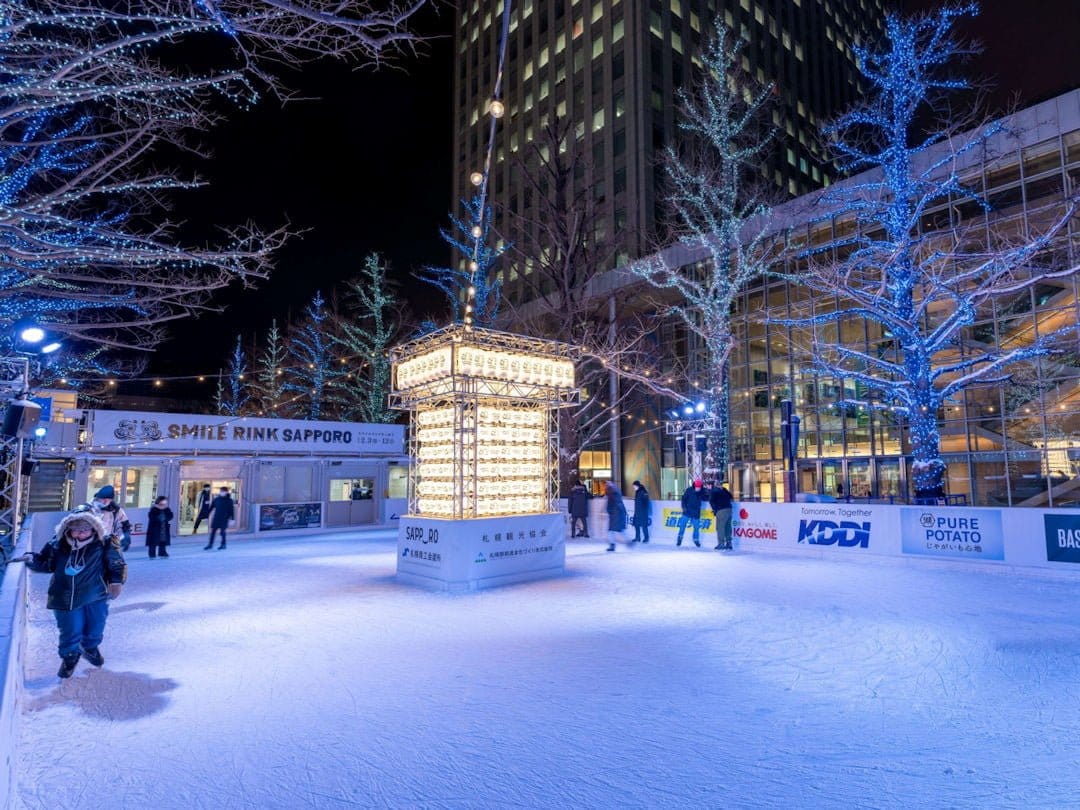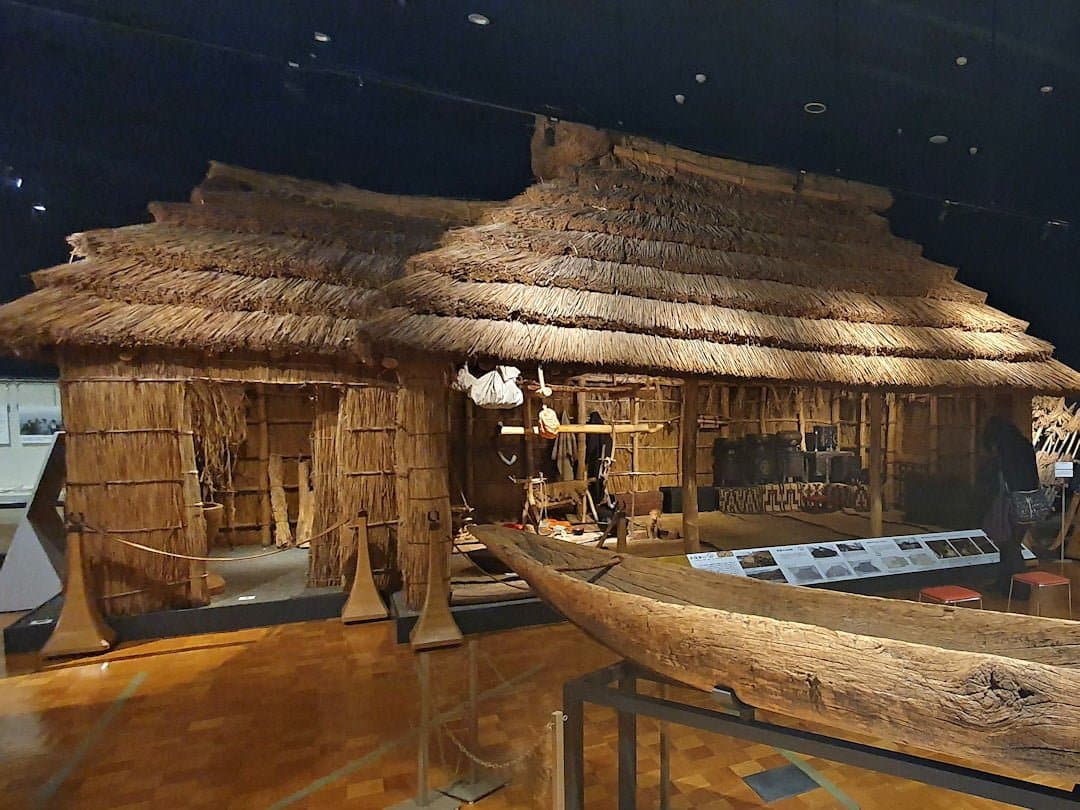This article may contain links to products and services we use and recommend. We may receive compensation when you click on links to those products. For more information, see our Disclosure Policy.
Ever wanted to experience the magic of winter in Japan? Why not start with Sapporo’s annual Snow Festival [Official website], where you can marvel at snow and ice sculptures, explore the city’s rich cultural heritage, and indulge in delicious local cuisine? This comprehensive guide will provide all the necessary information to maximise your 2026 Sapporo Snow Festival experience.
Are you planning a last-minute trip to Sapporo?
Book your transportation to/from and around Sapporo, keeping your carbon footprint in mind:
Find your perfect accommodation in Sapporo with Agoda and Booking.com. We recommend centrally located options and options near public transport:
Explore the wonders of Sapporo and beyond with the best tours and activities powered by Get Your Guide and Viator. We recommend these sustainable options with local providers:
We use and recommend Airalo eSIMs for affordable, hassle-free internet access in 200+ destinations. Activate before you arrive and get online instantly.
What is the Sapporo Snow Festival, and how did it come about?
The Sapporo Snow Festival (also known as the Sapporo Yuki Matsuri, さっぽろ雪まつり) is an annual winter celebration held in the capital city of Japan’s northernmost main island of Hokkaido. Sapporo (pronounced with emphasis on the a) receives an average of six meters of snowfall annually, which makes it the perfect destination to showcase the beauty and wonders of winter. The festival’s highlight is the hundreds of snow and ice sculptures of varying sizes on display.
The festival started in 1950 when high school students built six snow statues in Odori Park, the city’s heart. To their surprise, 50,000 people showed up to see their creations. The festival’s popularity has grown, especially since 1972, when Sapporo hosted the Winter Olympics. It now draws two million visitors from around the world each year.

The Snow Festival in Hokkaido's capital Sapporo has been an annual winter celebration for over 70 years | Image courtesy of City of Sapporo
When does the (next) Snow Festival in Sapporo take place?
The festival is held in early February each year and lasts for a week. The next Snow Festival in Sapporo is scheduled from 4 to 11 February 2026 (with the final day being National Foundation Day, an essential public holiday in Japan).
Where in Sapporo is the Snow Festival?
The Sapporo Snow Festival is held in Odori Park (the original site), Susukino and Tsudome – check our map below for further details. All activities are outdoors (and thus exposed to the elements) except for Tsudome, which also has some indoor activities.
Map of Accommodation, Points of Interest, Eateries and Transport
Below is a map of the recommended accommodations, points of interest, eateries, and transport terminals or stops mentioned in this article.
Ōdōri Park
Odori Park (Ōdōri, meaning large street) is a rectangular city centre park extending over 12 blocks (chōme) east-west from the Sapporo TV Tower. It hosts the most significant number of snow sculptures, some as big as multi-storey buildings.
There are also stages with performances at different times of the day (especially at night) and food stalls.

During the Winter Festival, Odori Park in Sapporo's city centre hosts the largest number of snow sculptures and the largest sculptures in size
Susukino
The Susukino site (pronounced Suskino with a silent second u) is also in the city centre. Its sculptures are positioned along Sapporoekimae Street (Sapporoekimae Dori), four blocks North to South from the Susukino subway station.
It’s the smallest of the three sites, but the Susukino sculptures, made of ice and quite intricate, are worth visiting.

While Susukino is the smallest of the three Winter Festival sites, its ice sculptures are beautiful and should not be missed
Tsudome
Tsudome is the only site outside the city centre, next to Sapporo Okadama Airport (OKD). Tsudome is about family fun in the snow, with snow tubing, snow rafting and snowball throwing on offer, and yet more snow sculptures are on display.
To get to the site, take the subway (Toho line) to Sakaemachi Station and then the shuttle bus (JPY100 per person every 15 minutes). Walking the one kilometre between the station and Tsudome is possible but not advised.

Tsudome is the largest site of the Snow Festival and the only site located outside the city centre | Image courtesy of City of Sapporo
What else is worth noting?
- Access to all sites is free of charge.
- The sculptures at Odori Park and Susukino can be viewed 24 hours a day, but they are only lit up from sunset to approximately 22:00. Tsudome, meanwhile, is open from 10:00 to 16:00.
- The festival sites will have a visitor and crowd management system (for example, directing visitors around the sculptures in a one-way direction). Please adhere to the rules for everyone’s enjoyment.

The snow and ice sculptures at Odori Park and Susukino are lit up from sunset to approximately 22:00 | Image courtesy of City of Sapporo
How many days should you set aside for the Sapporo Snow Festival (and what are the best days)?
If you only have time for the Snow Festival, spend at least two nights in Sapporo. Check out our handy itinerary in this article.
Otherwise, spend as much time in the city as you can (of course). We came for a week and could have stayed much longer—there is much more to experience in and around Sapporo than snow and ice sculptures.
The snow and ice sculptures are maintained throughout the festival but deteriorate the longer they are exposed to the elements – that’s just part of nature. So, the earlier you can get to Sapporo, the better. But beware: the first few days are also the busiest.

The snow and ice sculptures are maintained throughout the Winter Festival, but they do deteriorate, so the first few days offer the best chances to see them in their prime
To experience the best of both worlds, we recommend arriving in Sapporo a few days before the snow festival. You can enjoy the city and its surroundings without the influx of visitors during the festival, experience how the sculptures are installed, and see them in their best shape when the festival begins.

Arrive a few days before the Winter Festival in Sapporo and you get to experience the installation of the snow and ice sculptures | Image courtesy of City of Sapporo
How far in advance should a trip to the Sapporo Snow Festival be booked?
With two million visitors during the festival, book your accommodation in Sapporo as early as possible – especially if you’re after (affordable) accommodation close to the city centre sites, as those are snapped up first. We booked our accommodation in Susukino (within walking distance from both city centre sites) in mid-July, choosing a place that allowed free cancellations (which came in handy as we had to make a small date change in early September).
As for transport, you have a few more options and thus a little more time to sort out your plans (but don’t leave it too long). The Haneda-Sapporo route is the busiest flight route by number of passengers in Japan, so there are many flights daily from Tokyo, but also many other cities around Japan. There is also a Shinkansen line that connects Tokyo with Hokkaido. More on that below.

With two million visitors during the Winter Festival, accommodation near Odori Park and Susukino book out quickly, so organise your trip as early as you can
What to pack for a trip to the Sapporo Winter Festival?
Layers are crucial when packing for your Snow Festival trip. Winters in Sapporo are freezing cold, and temperatures can drop to double digits below zero, especially after sunset.
A warm jacket, hat, gloves and thick socks to keep your extremities warm are essential. Waterproof shoes with good traction are also recommended since you’ll be walking on challenging surfaces, including ice and sludge. We also recommend wearing long johns or leggings underneath your pants.

Layers are essential to stay warm and enjoy the many activities during the Sapporo Snow Festival | Image curtesy of Denny Ryanto on Unsplash
Want to know what we pack as full-time location-independent explorers?
We research and document every item we carry as travellers, whether during van life in our backpacks or as digital nomads earning a living on the road. These packing lists are all based on our own experience. If you travel (and who doesn’t) and have something to add as recommendations for carrying items, please feel free to contact us.
We packed according to our usual four-season list, only adding a pair of long johns, which kept us toasty. I even skied in these layers, stopping at the mountain hut café every few hours for a hot cuppa and to warm myself by the heater. Getting around and carrying our gear on our backs through the snow was easy.
And don’t worry:
- If you’ve forgotten a layer, Sapporo has some excellent second-hand shops (particularly in Susukino) where you can find whatever you left at home (at a very affordable price).
- If your shoes don’t provide enough grip, you can put extra grip straps underneath them. We saw them for sale at shoe shops all around town.

During the Sapparo Snow Festival, wear shoes with good traction or put grip straps underneath - they are for sale at shoe shops all around Sapporo
How to get to Sapporo?
By Air
Sapporo has two airports:
- New Chitose Airport (Official website, Google Maps location, IATA: CTS), 42 km / 26 miles southeast of Sapporo, is an international airport and the primary gateway to Hokkaido.
- Sapporo Okadama Airport (Official website, Google Maps location, IATA: OKD) is a regional airport 6 km / 4 miles north of the city centre and mainly serves domestic flights.

While Sapporo has two airports, you are likely to arrive at New Chitose Airport (CTS)
From New Chitose Airport (CTS)
Chances are (especially if you’re coming from overseas) you’ll arrive at New Chitose Airport.
From there, the fastest way to get into the city centre is by taking the JR Rapid Express (Chitose Line) to Sapporo Station:
- The journey takes approximately 40 minutes and costs JPY1,230 per person (without seat reservation) | JPY2,070 (with seat reservation).
- The train station is in the domestic terminal building on the first basement floor (B1F), and tickets can be bought from the ticket machines next to the ticket gates.
- The same ticket machines can be used to buy and top up IC cards (the local version is called the KITACA card).

The fastest way to travel from New Chitose Airport (CTS) into the centre of Sapporo is by taking the JR Rapid Express (Chitose Line)
The cheapest way to get to the city centre is to take a bus to Odori Park:
- The bus ride takes 70-90 minutes (depending on traffic and where you want to get off) and costs JPY1,300.
- Ticket counters are located on the 1st floor of both terminals.
- Buses run every 10 to 15 minutes throughout the day, and the Hokuto Kotsu and Hokkaido Chuo bus companies provide services.
- They also stop at various hotels en route. Check if yours is included, or get off at the hotel nearest to your accommodation.
The airport bus stops are located outside both terminals:
- From the domestic terminal, buses depart from Platform 14 (JAL) and Platform 22 (ANA).
- For international arrivals, buses to downtown Sapporo depart from Platform 84.

There are also bus services from New Chitose Airport (CTS) to the centre of Sapporo with stops at various hotels along the way
If you’re planning to rent a car, it’s worth noting that driving in Hokkaido in winter can be challenging, especially if you’re not used to driving on snowy and icy roads. However, if you decide to rent a car, bring an International Driving Permit (IDP), as you can’t hire a car in Japan without it.
The drive from New Chitose Airport to the city centre takes approximately one hour (about 15 minutes longer if you avoid tolls), depending on road and traffic conditions. Expect to pay approximately JPY 1,500 in tolls.

You can hire cars at New Chitose Airport (CTS) but need an International Driving Permit (IDP)
Finally, if you prefer the convenience of a taxi, be prepared to pay a premium. Taxis are the most expensive option, costing around JPY18,000, including tolls.
From Sapporo Okadama Airport (OKD)
The most convenient way to travel from Sapporo Okadama Airport to the city centre is to take the Airport Limousine Bus to Sapporo Station. The bus ride takes 30 to 40 minutes (without traffic) and costs JPY1,000.
If you want to save a few hundred yen and avoid traffic congestion, take the Asa 26 Asabu Higashi Naebo Sen route bus to Sakaemachi Station and the subway (Toho line) from there. Expect to pay JPY490 to Sapporo Station.

From Sapporo Okadama Airport (OKD) take the bus to Sakaemachi Station and the subway (Toho line) from there into the city centre
By Train
Sapporo can also be reached by train. From Tokyo Station, expect to pay around JPY29,500 (without a JR Pass).
The Tohoku-Hokkaido Shinkansen connects Tokyo with the city of Hakodate in southern Hokkaido, taking 4-4.5 hours. Trains cross the Tsugaru Strait between the islands of Honshu and Hokkaido using the Seikan Tunnel, the world’s longest undersea tunnel. From Hakodate (change at Shin-Hakodate-Hokuto Station), you can reach Sapporo in around 3.5 hours with the Limited Express Hokuto train.
There are no overnight trains, but watching the snowy-white winter wonderland pass by the train window makes for a pleasant journey.
In a few years’ time, the Shinkansen will go all the way to Sapporo. The line is currently being extended (via Kutchan, the closest station to the Niseko ski resorts) and is expected to be completed by early 2039.

To travel to the Winter Festival by train, take the Shinkansen to Hakodate (Shin-Hakodate-Hokuto Station) and the Hokuto Limited Express from there to Sapporo
How to get around the city?
By public transport
Sapporo has an efficient, safe and reliable public transport system consisting of JR trains, three subway lines, trams (called streetcars) and buses. The system is user-friendly, with signage and announcements in Japanese and English. Additionally, route maps and signs are bilingual, making it easy to navigate the city.
We recommend getting a Kitaca IC card and regularly topping that up. The Kitaca IC card can be used nationwide.

Pay by tapping your IC card when using public transport in Sapporo (the local version is called Kitaca) or use cash
What are IC cards?
In Japan, you will often encounter the term IC card (IC stands for Integrated Circuit). IC cards are essentially plastic cards that can be topped up, and the amount stored on the card is used for transportation—simply by tapping on/off at the card reader—and increasingly at convenience stores and other places.
Each region issues their version of the IC card; for example
- If you enter via Tokyo Narita or Haneda Airports, you will buy the Suica or PASMO card.
- You will find the ICOCA card for sale if you enter via Osaka Kansai Airport.
Fortunately, 10 of the most common IC cards (including the two above) can be used across regions (and likely more will be added over time). Some regions (including Nagano and Okinawa prefectures) only allow their own IC card (at this stage) or cash.
Also, note:
- Cards (including any stored funds) expire after 10 years of non-use, but you can reuse them if you return to Japan within that timeframe.
- You can return it (and get a refund of the money on the card plus the deposit you paid for the card itself)—as long as it's in the region where you bought it.
- You can load the IC card onto your smartphone - via Apple Pay or Google Pay - but you won't be able to get a refund of your deposit or any funds stored when you leave the country.
Some buses do not have IC card readers, so always travel with a few hundred yens worth of coins just in case.
If you travel on a bus without an IC card reader
- Take a ticket from the dispenser as you enter the bus.
- You can use the number on your ticket to look up the fare (on display at the front of the bus). Unless it’s a flat fee, the amount will increase the further you travel.
- Pay the applicable amount when you exit (a coin catcher is next to the bus driver).
- If you don’t have the correct fare, use the change machine (also next to the bus driver) before you pay, as the coin catcher won’t give change.

Sapporo's convenient public transport system makes getting around during the Winter Festival a breeze | Image courtesy of City of Sapporo
On foot
Two of the Snow Festival sites (Odori Park and Susukino) are within walking distance from each other. Be aware though that the footpaths and roads can get icy (or sludgy) and very slippery.
One way to reduce the amount of walking on the slippery ground is to use the elaborate network of underground walkways the city has. Zoom in on Google Maps, and you’ll see the network between the Sapporo train station (Google Maps location), Sapporo TV Tower (Google Maps location), Odori Park and the Susukino subway station. Another advantage: the underground walkways have shops and restaurants – a great place to have a break and warm up when exploring the festival sites in the city centre.

While Sapporo does its best to keep roads and footpaths clear, they can get icy (or sludgy) and very slippery, so mind your step when walking around during the Winter Festival
Where to stay in Sapporo during the Snow Festival?
While we recommend booking accommodation in the city centre, good public transport makes attending the event easy even if you stay outside the city centre. We found accommodation in a quieter area of Susukino, a 10-minute walk south of Odori Park – a fantastic location.
If those close to the city centre sites are already booked out (or out of your budget) choose accommodation a maximum of 10 minutes’ walk away from the nearest JR train or subway station as walking on icy or sludgy roads can be hard work.
For accommodation, as with any other travel expenses, it's worth shopping around. When we book our accommodation, we look across several booking platforms to find the best value-for-money option. Wherever you book, read the fine print to compare apples with apples. For example, your stay may incur extra charges (like local tourist taxes or cleaning fees). Some booking platforms include them, while with others, you have to pay them to your host upon arrival.
Below are our recommendations for affordable (and sustainable) accommodation options that are close to public transport and points of interest.
| Name | Property Features | Type | Price Indicator | Book Now |
|---|---|---|---|---|
| Apartment H702 | In walking distance from Susukino/Odori Park 2 bedrooms 3 living rooms Maximum 5 people | Two-Bedroom Apartment | $$$ | Book Now |
| Sapporo Airbnb | 2 single beds, 1 sofa bed Complete kitchen for easy cooking | Western-Style Apartment | $$ | Book Now |
| Glass Apartment | 1-star In walking distance from Susukino/Odori Park Double or Triple rooms | Apartment | $$$ | Book Now |
| Nakajima Park stay AMS tower Nakajima 16F | In walking distance from Susukino/Odori Park Recently renovated apartment | One-Bedroom Apartment | $$$$ | Book Now |
| Solaria Nishitetsu Hotel Sapporo | Certain documented environmental practices implemented at property. Restaurant Spa and wellness center | Hotel | $$$$ | Book Now |
| The Stay Sapporo Annex | Great location Excellent reviews | Hotel | $$$ | Book Now |
| Via Inn Prime Sapporo Odori | Perfect for a 1-week stay! 700m from Odori Park | Hotel | $$$ | Book Now |

During the Snow Festival, aim to stay in the city centre or within 10 minutes' walk from a subway or JR station | Image courtesy of City of Sapporo
Itinerary: How best to experience the Sapporo Snow Festival in 3 days/2 nights?
Here is our recommended itinerary for those who can only stay for two nights. If you can stay longer, spread out the suggested activities over the days you’ve got, and/or add a few activities from our suggestions in the following chapter.
Day 1
After arriving in Sapporo, drop off your bags at your accommodation. If time allows, visit Mt. Moiwa for panoramic (sunset) views of the city.
After dark, head to Susukino to see the illuminated ice sculptures and enjoy dinner at one of the restaurants nearby.

Snow Festival Tip #1: Enjoy the illuminated ice sculptures before/after dinner in Susukino
Day 2
Start the day with breakfast at your accommodation (or nearby) before heading to Odori Park to view the snow sculptures. Start at one chōme (by the Sapporo TV Tower [Google Maps location]) and complete one full circumnavigation.
Warm up with a miso soup and seafood lunch at Nijo Market [Google Maps location], two blocks southeast of the Sapporo TV Tower, then take the subway to Tsudome to experience the Snow Festival activities there.

Snow Festival Tip #2: First view the snow sculptures in Odori Park during the day, then revisit your favourites after dark
In the late afternoon, return to the city centre and head up to the Sapporo TV Tower for a sunset birds-eye view of Odori Park. After sunset, revisit your favourite snow sculptures (now lit up), go ice skating and/or enjoy the performances on the various stages.
Sample some of the local delicacies offered by the food stalls at Odori Park or have dinner at one of the many restaurants in the area.

Snow Festival Tip #3: Odori Park also offers an ice rink and stage performances | Image courtesy of City of Sapporo
Day 3
Check out of your accommodation and head to the airport. If time allows, visit the Hokkaido Museum [Google Maps location] and/or the Historical Village of Hokkaido [Google Maps location] on your way to the airport (continue reading the next chapter for more details).

When exploring Sapporo (during the Snow Festival), also visit the Historical Village of Hokkaido | Photo by City of Sapporo
What (other) things are there to do in Sapporo (during the Snow Festival)?
Plenty of activities exist in and around Sapporo beyond the snow and ice sculptures. So, if you’ve got more time than just two nights, here are some ideas for you:
Learn about Hokkaido’s history and culture
The Hokkaido Museum [Google Maps location], with its fascinating collection of exhibits, showcases the history of Hokkaido and the culture of its indigenous Ainu people. The Historical Village of Hokkaido [Google Maps location] is an open-air museum displaying traditional buildings and artefacts from the Meiji and Taisho periods (1860s-1920s).
Make sure you check the opening times before making plans. Budget at least two hours for the Museum and 90 minutes for the Village – if you want to visit both, also consider that it takes 15 minutes to walk between them.
Buses to the Museum/Village leave from Shin-Sapporo JR Station, where the JR Rapid Express stops from/to New Chitose Airport. Look for the bus labelled 新22開拓の村行. The bus serves both sights before heading back to Shin-Sapporo, so if you visit both, you can jump on the bus back at whichever sight you finish.
If you come here on your way to/from New Chitose Airport (CTS): Luggage lockers are available at the station, the Museum and the Village.
There is only a tiny café with limited supplies at the Museum (and only a drinks vending machine in the Village). So, bring your supplies as needed.

Learn about the history of Hokkaido and the culture of the indigenous Ainu people at the Hokkaido Museum
Enjoy panoramic views
Sapporo is located on an alluvial plain fringed by mountain ranges to the north and south. For breathtaking 360-degree views of the city and surrounding mountains, take the ropeway and cable car up to the Mt Moiwa Observatory. This unique vantage point is excellent at night when the city lights up (arrive well before sunset as it gets packed).

The Mt Moiwa Observatory offers breathtaking 360-degree views of Sapporo and the surrounding mountains
Be sure to visit the nearby Fushimi Inari Shrine [Google Maps location] (a 10-minute walk northwest from the bottom station) before you go up to make a wish or say thanks.
For a bird’s eye view from the city centre, head up to
- the top of the Sapporo TV Tower (for some extra adventure and unobstructed photos of Odori Park, take the stairs down) OR
- the JR Tower Observatory (T38) at Sapporo Station (if you prefer it a bit higher up with fewer people). The ticket office is on the 6th floor of the Stellar Place Department Store (as you walk from the food court towards MUJI).

Taking the stairs down from the Sapporo TV Tower gives you unobstructed views of the snow sculptures at Odori Park
Experience the joy and adrenaline of winter sports
Ever wanted to see what it’s like to be a ski jump athlete? Check out the Okurayama Ski Jump Stadium [Google Maps location] – you can take the chair lift to the top (with gorgeous views across the city) – and experience a ski jump with the ski jump simulator at the Sapporo Olympic Museum [Google Maps location] next door.

For a taste of adventure, take the lift to the top of the Okurayama Ski Jump Stadium or check out the ski jump simulator at the Sapporo Olympic Museum next door
If you prefer to ski (or snowboard) on solid ground, several ski areas are near Sapporo. The Mt Teine Ski Resort [Google Maps location] is just a 1 hour and 15-minute train and bus ride away. Bonus: In sunny weather, you enjoy panoramic views over Ishikari Bay and the Sea of Japan.

Mt Teine Ski Resort is close to Sapporo and offers panoramic views over Ishikari Bay and the Sea of Japan
What (and Where) to Eat in Sapporo?
No trip to Sapporo would be complete without sampling some local cuisine. Hokkaido is known for its delicious seafood, rich miso ramen and hearty soup curry, a unique dish that blends Japanese and Indian flavours:
- Seafood: Try sashimi on a bed of rice (Kaisendon), hairy crab (Kegani), sea urchin (Uni) or sea snail (Tsubu Gai) at Nijo Market or the Seafood Market 10 minutes walk east of Nijuyonken Station/Tozai line [Google Maps location].
- Miso Ramen: This local speciality uses a broth made from soybean paste instead of pork bones. Try this unique type of ramen at one of the small eateries at the Ramen Alley (formally known as Ganso Sapporo Ramen Yokocho) in Susukino.
- Soup Curry: Check out ZORA (one block south of Odori Park at 7 chōme) or the Sapporo Soup Curry Bar (southwest of the Susukino festival site).
Or sample everything the region has to offer – with fresh ingredients exquisitely presented – at Toraya, one of the city’s Michelin Star Kaiseki restaurants.

Make sure to taste Sapporo's soup curry - It's a great way to warm up during the Snow Festival | Photo by City of Sapporo
If you want to be social, consider the Sapporo Bar Hopping Food Tour or for a unique dining experience, join one of these cooking classes or food tour with a local:
Have you been to the Sapporo Snow Festival?
What did you enjoy the most? And what other tips do you have? And if you’re still planning your trip, what other question/s do you have?
Before you go, if you liked our article and found it helpful, we would appreciate it if you could share it with your friends and family via the Share buttons below. Even better: Leave a short review on Trustpilot or Google, which would help us further build our online reputation as a (trustworthy and helpful) travel and lifestyle blog.


